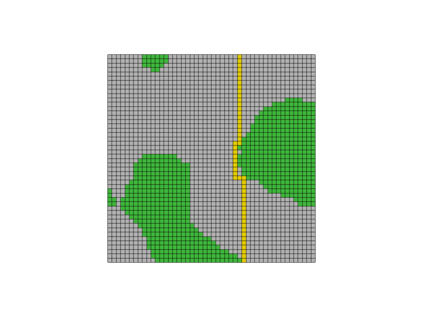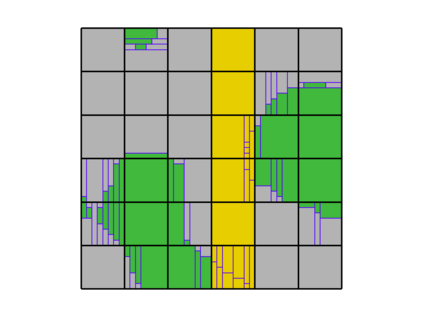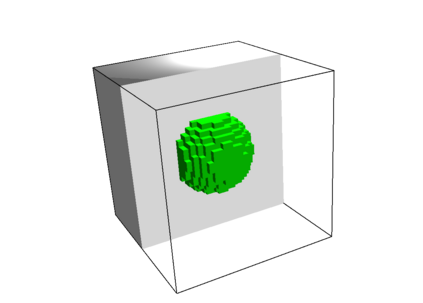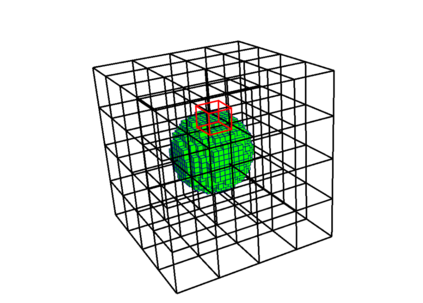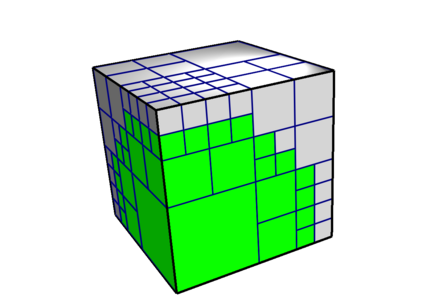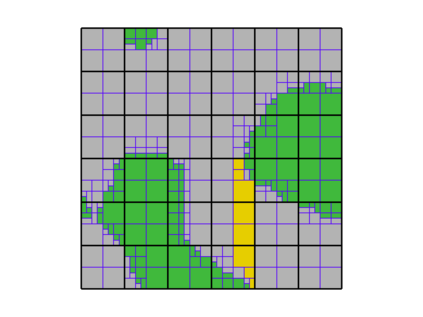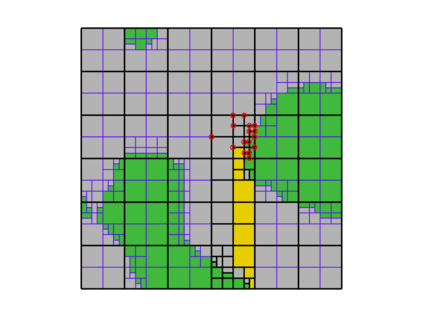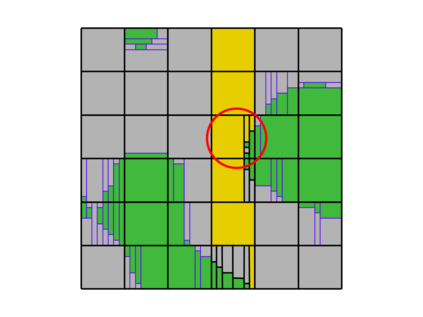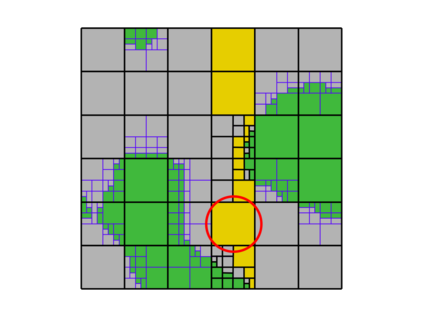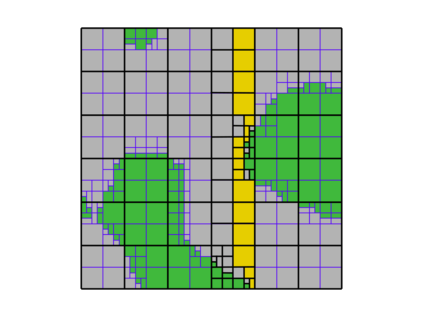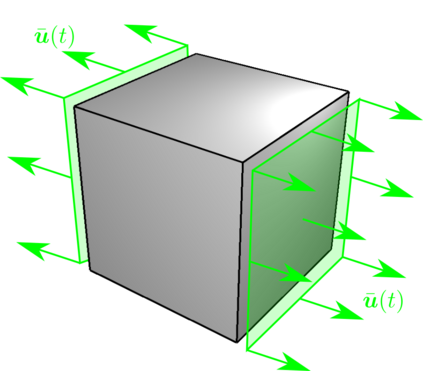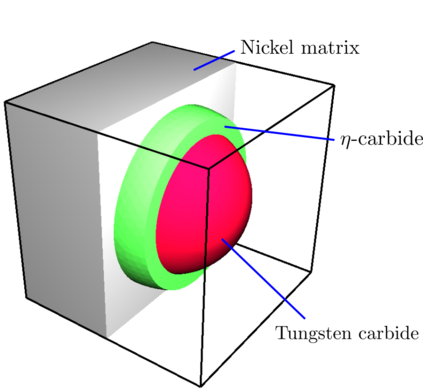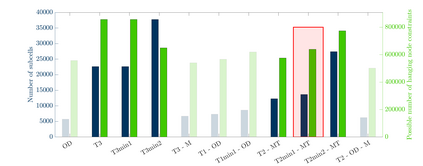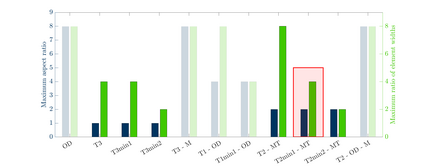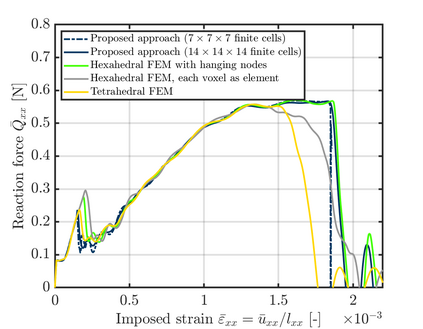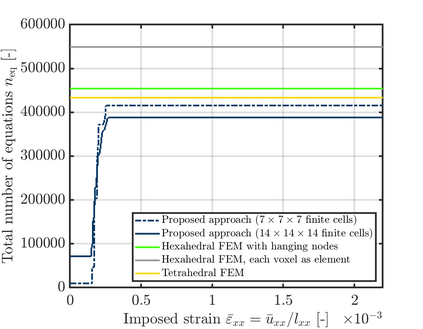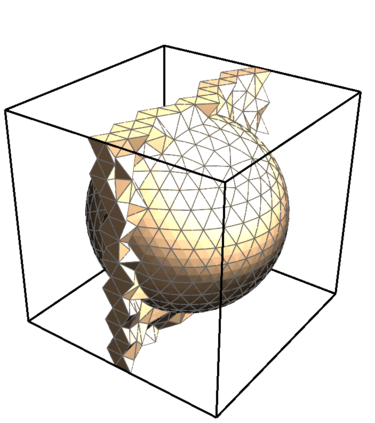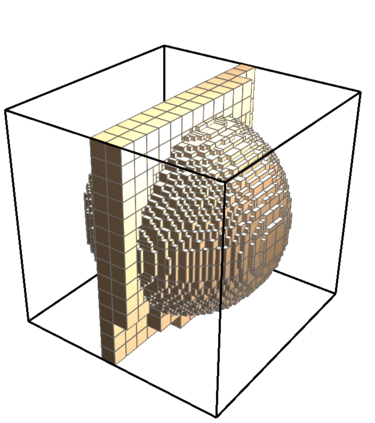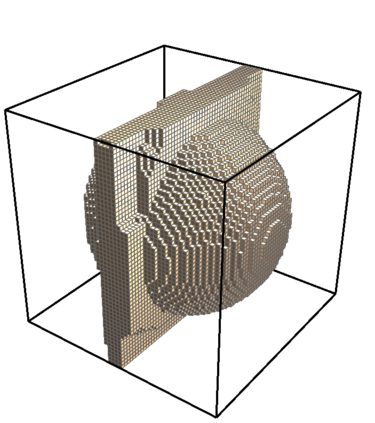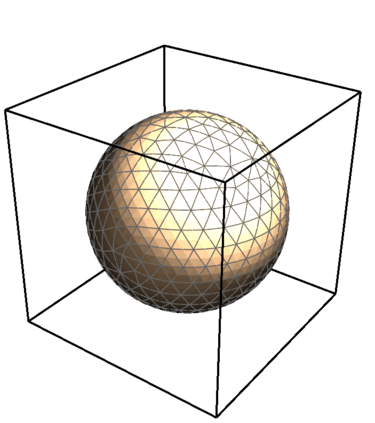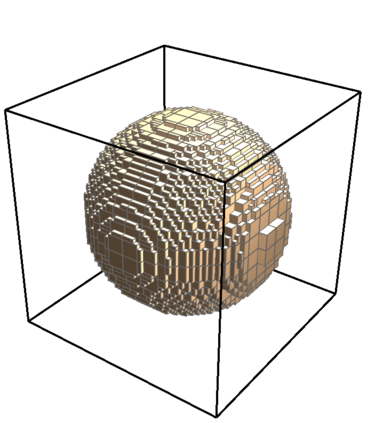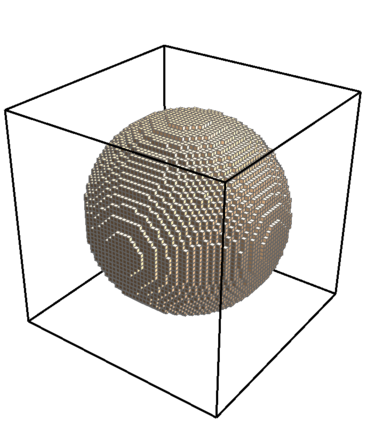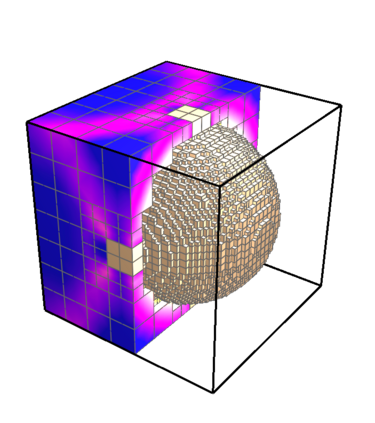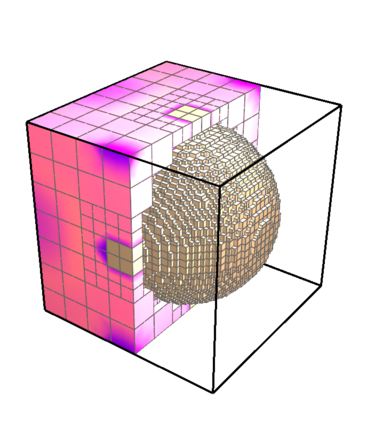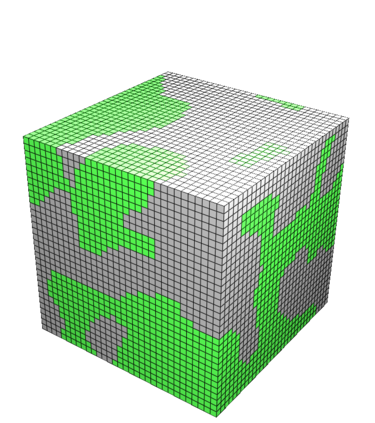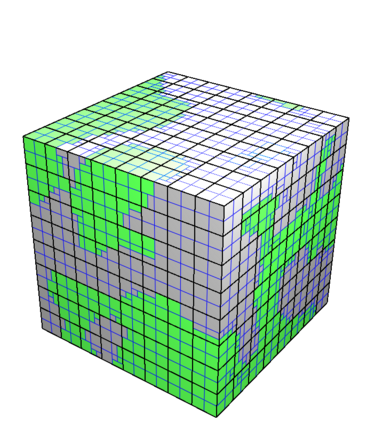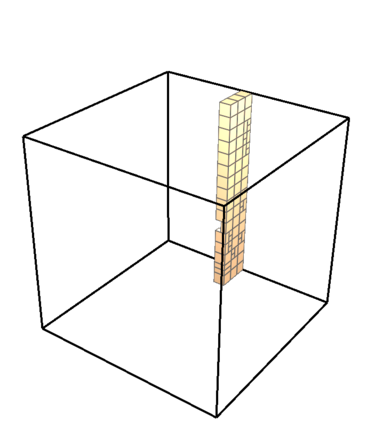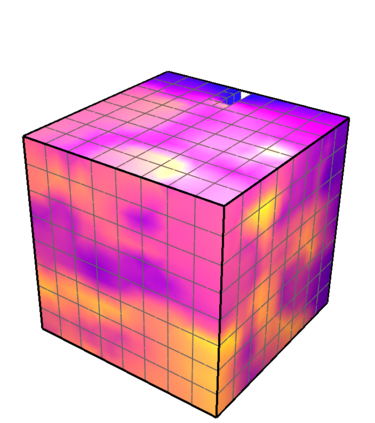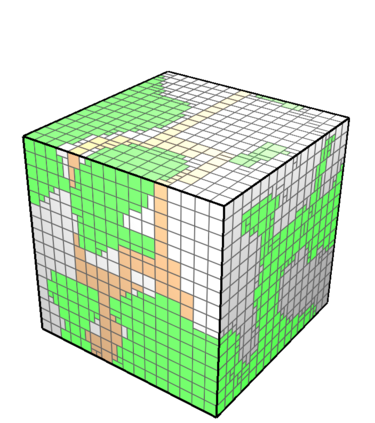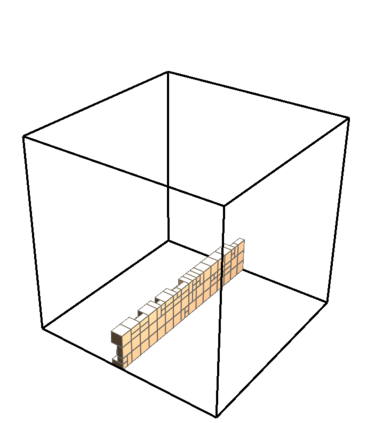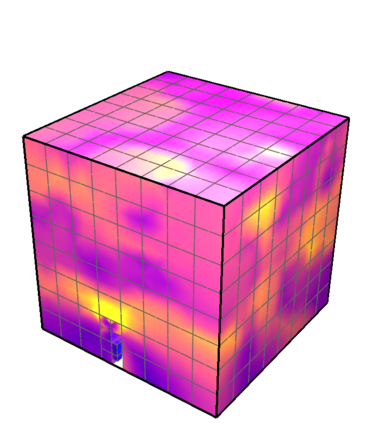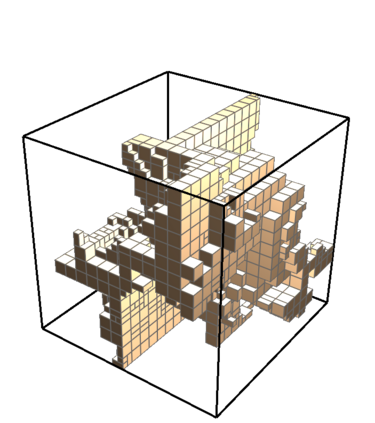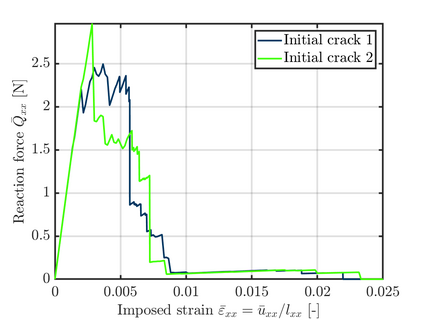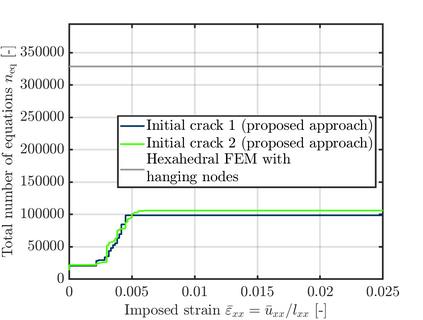This paper presents an algorithm for the efficient simulation of ductile crack propagation through heterogeneous structures, as e.g. metallic microstructures, which are given as voxel data. These kinds of simulations are required for e.g., the numerical investigation of wear mechanisms at small length scales, which is still a challenging task in engineering. The basic idea of the proposed algorithm is to combine the advantages of the Finite Cell Method allowing for a convenient integration of heterogeneous finite element problems with the eigenerosion approach to still enable the mesh-independent simulation of crack propagation. The major component is to switch from finite subcells to finite elements wherever the crack progresses, thereby automatically adaptively refining at the crack tip by managing the newly appearing nodes as hanging nodes. Technically relevant problems of crack propagation at the microscale are mostly linked with sub-critical crack growth where the crack moves fast and stepwise with subsequent load cycles. Therefore, inertia may become important which is why dynamics are taken into account by spreading the mass of the eroded elements to the nodes to avoid a loss in mass resulting from the erosion procedure. Furthermore, a certain treatment for the finite cell decomposition is considered in order to ensure efficiency and accuracy. The numerical framework as well as the voxel decomposition techniques are analyzed in detail in different three-dimensional numerical examples to show the performance of the proposed approach.
翻译:本文介绍了通过多种结构(例如金属微结构,作为 voxel 数据提供)有效模拟粘液裂缝传播的算法,例如金属微结构,作为Voxel 数据提供。例如,对小长度尺寸磨损机制进行数字调查,这仍然是工程上的一项艰巨任务。拟议算法的基本设想是,将Finite 细胞方法的优点结合起来,以便方便地将杂交的有限元素问题与消化法的方法结合起来,从而仍然能够使对裂缝传播进行网状独立模拟。主要组成部分是从有限的子细胞转换到在裂缝进展的任何地方的有限元素,从而通过将新出现的节点作为悬浮节点加以管理,自动在裂缝处进行适应性改进。在微尺度上,与裂缝有关的技术问题大多与亚临界裂变密的裂缝增长有关,因为裂缝迅速和逐步移动与随后的负载周期有关。因此,惯性可能变得很重要,这就是为什么通过将腐蚀性元素的质质物质传播到节点,从而避免由于侵蚀程序而造成大量损失。此外,在轨迹端点上进行某种处理,在定量的精确性分析方法中的精确性分析,以便分析数字的精确性分析。


